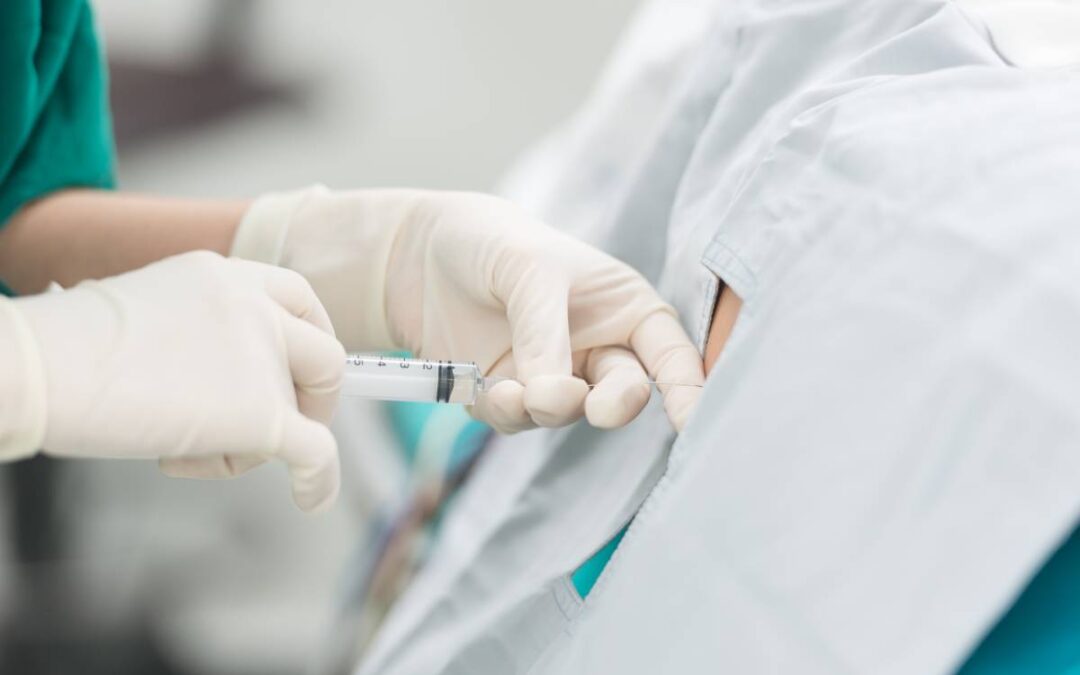Septoplasty addresses breathing issues resulting from a deviated septum, improving the airway. It can also provide aesthetic enhancement of the nose. It is a safe and common procedure, but as with all surgeries, septoplasty comes with a certain degree of infection risk.
During septoplasty, an incision is made on either side of the septum, after which the mucous membrane is lifted. Obstructing cartilage or bone is removed, and the septum is repositioned. Finally, splints are then placed around the nose to offer support as the septum heals. It is commonly performed under general anesthesia.
A significant volume of research has examined infection risk in the case of septoplasty procedures in particular. A retrospective study was carried out to assess the incidence and spectrum of infectious complications in 100 consecutive adult nasal septoplasty patients 2. Among all patients, twelve developed postoperative infection; of those twelve, eight had a follow-up and Staphylococcus aureus was isolated from the nasal mucosa in three of eight (38%) patients, which was consistent with previous findings in healthy nasal septoplasty patients 2.
Antimicrobial prophylaxis is used in some clinical contexts in order to lower infection risk. For septoplasty, some argue that it does not significantly decrease infection risk and is unnecessary. In the study above, 21 patients received antimicrobrial prophylaxis, and of those, three developed an infection. Researchers concluded that septoplasty patients at higher risk of infection, such as those with diabetes, may be appropriate for preventative measures 2.
This preliminary research was further corroborated by a study which assessed postoperative cephazolin usage for preventing infection following a septoplasty procedure 3. The researchers found that septoplasties are considered potentially contaminated surgeries, and that cephazolin (1.0 g intravenously given once postoperatively), which is easy and effective to use, was sufficient to prevent potential complications.
A recent study sought to investigate the infection risk and number unplanned postoperative visits in septoplasties with and without additional nasal surgery and the role of antibiotic prophylaxis 4. Data revealed a statistically significant stand-alone effect of preoperative prophylactic antibiotics in preventing postoperative infection in septoplasty, in particular regarding additional sinonasal surgery. The researchers concluded that the use of preoperative antibiotics as a prophylactic measure statistically significantly reduced the rate of infections and unplanned postoperative visits linked to septoplasty procedures when all postoperative infections, superficial and mild ones included, were taken into account 4.
A different study sought to assess the real necessity of antibiotic use in septoplasties, as well as the main postoperative complications described in the literature, and found conflicting data compared to the above conclusions 5. Researchers found no significant difference across groups with regard to pain, fever, nauseas, vomits, bleeding, or purulent secretion. In addition, none of the patients has signs of a hematoma or septal abscess. Therefore, the researchers concluded that the nasal surgeries were clean and did not warrant antibiotic prophylaxis given their low infection risk 5.
Additional research clearly remains to be carried out in order to fully elucidate the infection risk and need for antibiotics or other treatment in the context of septoplasty.
References
- Septoplasty Princeton, NJ | Monroe Balloon Sinuplasty. Available at: https://www.drscottkay.com/septoplasty-balloon-sinuplasty-plainsboro/. (Accessed: 14th July 2023)
- 2. Mäkitie, A., Aaltonen, L. M., Hytönen, M. & Malmberg, H. Postoperative infection following nasal septoplasty. in Acta Oto-Laryngologica, Supplement (2000). doi:10.1080/000164800454297
- 3. Erkul, E., Babayigit, M. & Kuduban, O. Postoperative Cephazolin Usage is Sufficient for Preventing Infection after Septoplasty Procedure. Allergy Rhinol. (2011). doi:10.2500/ar.2011.3.0013
- 4. Kotisalmi, I., Hytönen, M., Mäkitie, A. A. & Lilja, M. Septoplasty with and without additional sinonasal surgery: postoperative sequelae and the use of prophylactic antibiotics. Arch. Oto-Rhino-Laryngology (2022). doi:10.1007/s00405-021-07113-9
- 5. Caniello, M., Passerotti, G. H., Goto, E. Y., Voegels, R. L. & Butugan, O. Antibiotics in septoplasty: is it necessary? J. Otorhinolaryngol. (2005). doi:10.1016/s1808-8694(15)31241-6







Recent Comments